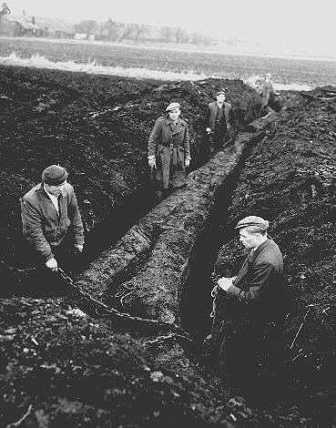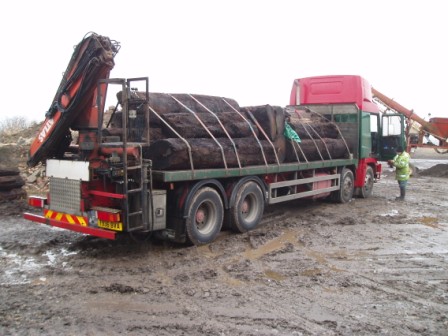
ANCIENT BOG OAK
...from the Fens of England
Many thousands of years ago the East Anglia fenland basin was very densely forested by gigantic Oak trees.
Approximately 7000 years ago a rise in sea level relative to land level caused the rivers to back up and flood the fens, consequently the trees died standing and then fell into the silt of the forest floor and many have been preserved under anaerobic conditions until now.
Due to cultivation of this productive land these sub-fossilized trees are coming to the surface causing much inconvenience to the farmers.
The preserved trees can on occasion have a branchless length in excess of one hundred feet, the canopy having long since decayed. These colossal examples hint at the extraordinary grandeur and density of these high forests. The trees are however extremely fragile when exposed to the elements and degrade very quickly indeed.
The Bog Oaks should ideally be excavated from the peat during the winter months and assessment of the trees overall condition must be carried out immediately and the tree processed according to its condition. Due to the density of these majestic forests many trees would have fallen on top of one another and have lain on top of there small canopies exposing them to the elements to varying degrees and causing quite severe insect infestation and fungal disease, in short subjecting the trees to a lot of decay before being preserved in the silt of what was once the forest floor.
The first of the trees to fall having had an uninterrupted descent into the silt are in a far better condition than those exposed for longer periods of time. Some of the wood has varying color, fading from black on the outer annual rings to dark brown at the heart. This becomes very striking when the tree is quarter sawn.
The trees when first excavated are at absolute fibre saturation making an assessment of the trees condition quite difficult. However in addition to the degree of colour penetration it is possible to chip away at the outer annular rings and judge the level of resistance and density. This assessment and the Bog Oaks location below sea level gives us an indication as to how much the sub-fossilised tree has changed its structure. Making an accurate assessment of the trees structure is critical to the success of the drying process as they are all different. Excavated trees in truly exceptional condition can be air-dried under very controlled conditions, however, the majority of Bog Oaks have to be dried artificially and be very closely monitored. All examples must be quarter sawn as due to the ring porous nature of the trees a much more consistent rate of moisture extraction is possible.
It is usual at the end of the drying process to have removed from the timber a staggering 3.2 gallons of water per cubic foot, which is over 50% of the trees original volume, and each plank reduces its width and thickness by one third. 
The challenge of drying Bog Oak is to extract these huge amounts of water and incur such a degree of shrinkage whilst maintaining a flat straight and split free board.
The characteristic black quality of Bog Oak is a result of a chemical reaction occurring between the tannins in the Oak and soluble irons present in the mineral subsoil.
Bog oak has been used for small turnings and inlay details in furniture for hundreds of years, mainly because it was the only native black timber available, it is unusual to see Bog Oak used in any substantial thickness as traditional drying techniques would have resulted in a great deal of degrade. However due to the development of artificial drying techniques it is possible to dry this precious material in large sections, it is then that the true nature of this rare and visually powerful timber can be appreciated. There is a lot more to Bog Oak than its colour, for example, it has a weight and density when dry comparable to the world's most expensive and highly prized tropical hardwoods.
Over the years many thousands of tons of these extraordinary sub-fossilised trees have been excavated and burnt to enable continued cultivation of the fens.
Fortunately, some farmers take the view that these rare trees are a national treasure and have been very generous and supportive of any efforts to preserve as much as possible, there will come a time when there are simply no more buried in the peat.
Research by Dr Switzer has shown that the age of most species from the East Anglian fenland basin lie between 1,500BC to over 5,000BC. Recent radiocarbon dating of our current stocks has established a date of around 3,300BC.
If you would like to purchase a certified Ancient Bog Oak pen, check out my Store.
|